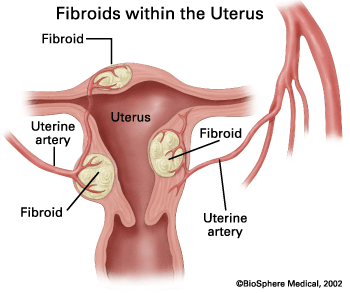
fibroids-in-uterus
Fibroid tumors are noncancerous or benign growth that improve in the uterus muscular wall. In some occasion, fibroids do not show any symptoms, but they still give women pain and excessive bleeding, that kind of problems are certainly difficult for women. They usually grow when the estrogen level, the female hormone decreases significantly after menopause. On the other hand, it is quite rare for women who are taking additional estrogen to feel relief of the symptoms.
Fibroid tumors category
Briefly, there are three regular category of fibroid tumors. This category is taken based on the visible differences, such as the size of the fibroids which range from a very small to the size of cantaloupe or larger. Sometimes, they can trigger the uterus to develop to the size of approximately five-month pregnancy.
And these are the primary category or types of Fibroid tumors;
1. Subserosal fibroids
This fibroids take place under the outside of the uterus, covering the uterus and develop out through the wall. There is a chance for the woman to feel uncomfortable as the size and the pressure they cause, but typically they do not change a woman’s menstrual cycle.
2. Submucosal fibroids
These are the least common fibroids. These take place deep within under the uterus, under the lining of uterine cavity. They often cause symptoms such as very deep and prolonged periods.
3. Intramural fibroids
In contrast with the submucosal, these are the most common fibroids. They grow within the uterine wall and expand, causing the uterus become larger than usual. There is a chance that they can cause heavier menstrual cycles and pressure.
Regular Symptoms
Symptoms of fibroids tumors occur depending on the size, location, and number of fibroids. By involving those aspect, they may cause:
• Heavy, extended menstrual cycles and uncommon monthly bleeding, occasionally with clots. This often brings woman to anemia.
• Pelvic pressure or heaviness
• Pelvic pain
• Pain in the back or legs
• Pain during sexual activity
• Bladder pressure leading to a constant urge to urinate
• Pressure on the bowel, leading to obstruction and swelling
• Irregularly distended abdomen
For the closing, it would be a good information for you that fibroids tumors may start in women when they are about 20s. In spite of that, most woman do not start to have the symptoms until they reach their 30s or 40s, even physicians cannot always predict when a fibroid will grow and cause symptoms.
Fibroids significantly increase during pregnancy. This is believed to happen because the estrogen level is increasing. However, the fibroids are usually shrinking back to normal after pregnancy. And as has been mentioned above, menopause is involved as well. Fibroids are able to grow as a menopausal woman is taking over estrogen supplements or in this case, hormone replacement therapy.



 Saving...
Saving...